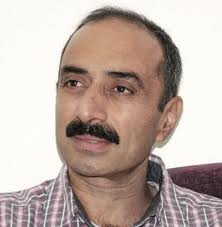
Ahmedabad, October 21: Gujarat cadre IPS officer Sanjiv Bhatt has complained that the G.T. Nanavati- Akshay Mehta judicial inquiry commission, probing the 2002 train carnage and post-Godhra communal riots, is creating “impediments” in his bid to inspect some official documents.
(Mr. Bhatt had alleged complicity on the part of Chief Minister Narendra Modi in the State-wide riots.)
“Disappointed ”
Mr. Bhatt, who has been given time till October 27 by the Gujarat High Court to complete inspection of all 47 documents he listed in his earlier affidavit and to file his final affidavit within a month, has returned disappointed as the commission had not yet “indexed” the documents and submitted them for his perusal.
Moreover, Justice Nanavati informed Mr. Bhatt that he would be allowed to inspect only those documents which had not been marked by the commission “confidential or secret.”
‘Matter of discretion’
“No body can claim, as a matter of right, either under the Commissions of Inquiry Act or the rules framed thereunder, inspection of the documents which have come on record of the commission. Inspection of records of the commission is a matter of procedure and therefore, a matter of discretion of the commission,” he said in a note handed over to the IPS officer through the commission secretary.
The note said the High Court had it left to the commission’s judgement to decide the “relevancy or otherwise” of the documents listed by Mr. Bhatt.
He, however, contested this claim and alleged that the commission had “deliberately chosen to misinterpret” the court order.
In a letter to the commission on Saturday, Mr. Bhatt quoted the relevant paragraphs of the judgment to point out that the Division Bench headed by Chief Justice Bhaskar Bhattacharya, in its order earlier this week, had given a clear instruction that the commission produce all documents he had listed.
The order also pointed out that the Gujarat government had denied that any of the official documents listed by him, including the most crucial records of the State Intelligence Bureau then, had been “destroyed” and that these had already been placed before the commission or would be submitted within a week.
Mr. Bhatt said: “It is very apparent from the wording of the note that you have singly chosen to deliberately misinterpret the judgment and order of the High Court.”
Request
He requested the commission to “comply” with its directions and remove “all impediments being created by the state with tacit blessings of the commission” and facilitate his timely filling of the affidavit.
Mr. Bhatt approached the High Court after the commission had turned down his request to issue a direction to the government to produce the documents which, the IPS officer had claimed, would enable him to authenticate his final affidavit before the commission.





Comments
Add new comment